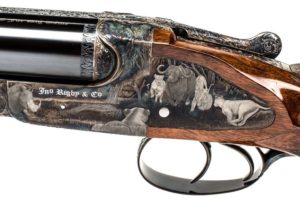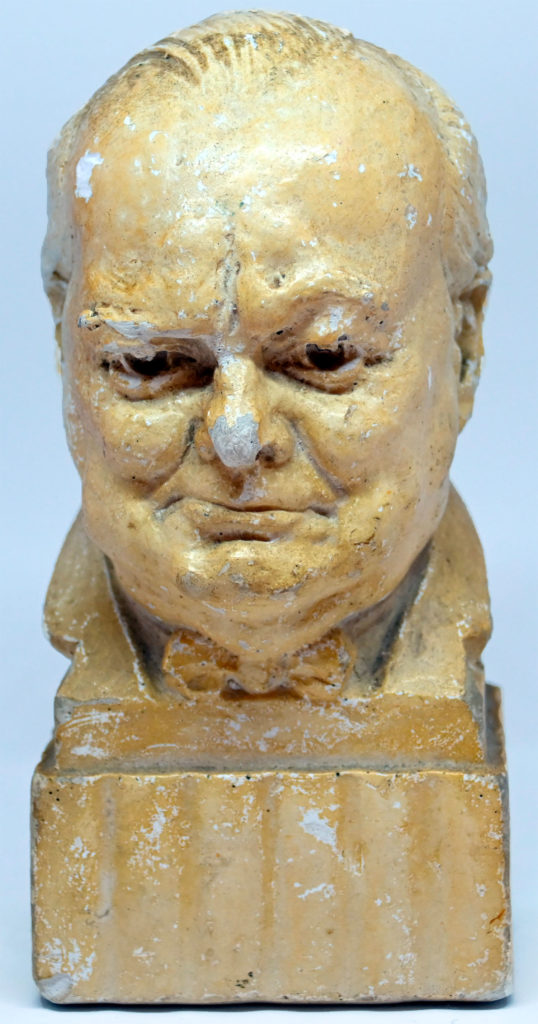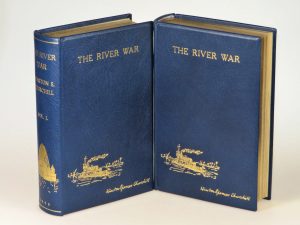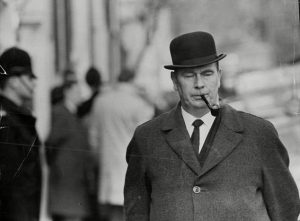
Bulletin #159 — Sep 2021
Churchilliana

Barbara Tribe Churchill bust
September 4, 2021
The World of Churchill Collectables: Tribe Bust
By BRIAN KRAPF
Collectable busts of Winston Churchill range from the extremely rare and highly expensive, such as that by Jacob Epstein, to mass produced bad likenesses. The story of how and why this wartime plaster bust of the Prime Minister was produced by noted sculptress Barbara Tribe is a classic and oft told tale in the world of Churchilliana.
The sculptress, Barbara Tribe, immigrated from Sydney, Australia to London in 1935. While still a teenager, she had learned the art of sculpting at East Sydney Technical College and was recognized as a gifted artist. In London, she became a member of the Royal Academy while continuing to develop her artistic talent at the City & Guilds School of Art in Kennington. During this time, she became an in-house sculptress at Selfridges, creating commissioned busts for the department store’s wealthy customers.
Shortly after war was declared, Ms. Tribe went to work for the Ministry of Supply, while still sculpting in her private London studio. In 1942, she was recruited by the newly created Inspectorate of Ancient Monuments, which was tasked with documenting London’s major landmarks to determine whether blitz damage necessitated restoration work. In this capacity, Ms. Tribe informally met the Prime Minister. The meeting would serve as the catalyst for her creation of the plaster bust presented here.
In 1943, Ms. Tribe and her colleagues from the Inspectorate were called upon to assess the interior of No. 10 Downing Street. Prime Minister Churchill was outraged by their unexpected presence and rudely ejected them from the building. Ms. Tribe was so taken aback by the occurrence, she went straight from No. 10 to her studio and sculpted a small bust of Churchill from memory to preserve how he looked that day.

2025 International Churchill Conference
Shortly after the bust was completed, Ms. Tribe donated it as an auction fundraiser item to Mrs. Churchill’s Red Cross Aid to Russia Fund. It was graciously accepted by Mrs. Churchill at Chequers, where Ms. Tribe was given a tour of the house and a letter of thanks.
The plaster bust pictured here is not the one Ms. Tribe donated to Mrs. Churchill. However, it was made from the same mold during the war and signed by Ms. Tribe. Unfortunately, no records can be found which confirm when and how many of these additional copies she produced. The Tribe Churchill busts seldom appear on the market; when they do, they command a price commiserate with their rarity. Thus, the consensus is that Ms. Tribe produced very few. Also, the question remains “why” she made them at all. Its doubtful she produced them for resale but no records show additional donations to Mrs. Churchill’s fund or any other wartime charity.
It should be noted that the Tribe Churchill bust was reproduced by the Thai royal family in 1968 – nine in bronzed resin and nine in bronze- using the original molds. The originals are plaster as shown here. If you find a plaster Tribe Churchill bust in an antiques stall or at a sale room, know it is a rarity and comes with a wonderful story!
Brian Krapf’s book We Want Winston!—A Treasury of Churchill Memorabilia will be published later this year.
Subscribe
WANT MORE?
Get the Churchill Bulletin delivered to your inbox once a month.





